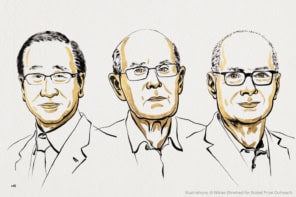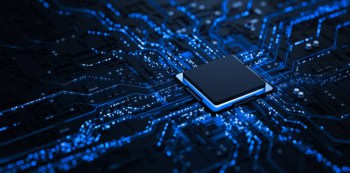
A new method to produce indistinguishable and coherent electrons has been developed by scientists in France. The researchers have created a small, electron-emitting chip and used it to produce two single electrons emitted from different sources that are in the same quantum state. This technique is a key step for developing electron-based quantum-information-processing techniques.
Fermionic rules
Electrons are fermions and so must obey Pauli’s exclusion principle that prevents identical fermions from occupying the same state, which leads to anticorrelations or “antibunching”. Although this was recognized decades ago, it has proved difficult to perform such an antibunching experiment because electron beams are not coherent – there are many electrons in any system and they all interfere with each other, as well as the environment.
This is what encouraged Erwann Bocquillon and Gwendal Fève at the Ecole Normale Supérieure in Paris, along with colleagues from the Laboratory for Photonics and Nanostructures near Paris and from the Ecole Normale Supérieure de Lyon, to see if indistinguishable electrons could be generated by independent sources, as is done in optics. “We now understand how electrons move in a system – a very fundamental issue – a lot better. Of course, it is also important to produce such electrons to encode quantum information in the future, but we were most interested in the fundamental proof of concept, in this case,” explains Fève.
Restricted movement
The researchers’ electron-emitting “chip” was built using a “very clean” micron-sized bulk-semiconductor sample in which the electrons propagate in very straight lines for several microns in 2D before getting scattered, limiting their interactions. This can be seen as the green plane in the artist’s illustration above. The team then uses a strong magnetic field to further restrict the movement of the electrons to only 1D along the edge of the plane (denoted by the arrows in the illustration), such that single electrons may be guided to each of the emitters – the two small islands of the electron gas located on each side of the picture. The gold sections next to the emitters represent metallic electrodes deposited on top of the electron gas.
By applying a voltage pulse to the metallic electrode deposited on top of the emitter, the researchers trigger the emission of a single electron to an electronic beamsplitter that is made up of two input and two output arms. Fève told physicsworld.com that their sample is capable of emitting billions of single electrons per second – one electron per nanosecond.
Perfectly synchronized
“The two sources are perfectly synchronized such that both particles arrive simultaneously on the splitter and perfect antibunching occurs, meaning the two electrons always exit in different outputs,” explains Fève. That means that if a single electron is sent in one of the input arms with the other input being empty, for example, the electron would escape randomly in one of the outputs. But in the experiment, the two electrons, generated by the two identical, synchronized but otherwise independent emitters would arrive simultaneously at the two input arms of the splitter and would always emerge in two distinct outputs, obeying Pauli’s principle.
“This electron antibunching effect can only be explained by quantum mechanics. So it is a quantum interference between two particles and that relates to their indistinguishability. This would only happen for two electrons in the same pure quantum state that has not been affected by interactions with the environment, making the electrons indistinguishable and coherent,” says Fève.
But he is also quick to point out that while the team did achieve a high degree of indistinguishability, the electrons were not completely so, meaning that some minimal environmental interaction did occur. “To be able to entangle the electrons, wherein they would violate Bell’s inequality, they need to be completely indistinguishable – so this is something we are currently investigating and working on,” says Fève. The researchers are looking at making their sample even smaller so that the electrons travel even shorter distances, while keeping in mind the effects of temperature at such sizes.
Fève says their method shows that it is indeed possible to produce well-controlled single electrons. “Our technique also provides a lot of tenability in terms of the energy and rate at which one would want to produce electron wavepackets, on demand, in the lab,” he explains, saying that the degree of control their source offers is its main advantage.
The research is published in the journal Science.



